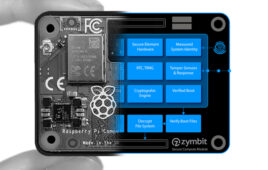One of the keys to developing commercially viable electric and hybrid-electric vehicles is the producing fuel cells that are efficient yet not prohibitively expensive to produce. Now, researchers from several universities in the U.K. are leveraging a Nobel prize-winning chemistry technique on a mixture of metals, to potentially reduce the cost of fuel cells in electric vehicles and reduce harmful emissions from conventional vehicles.
The research involves translating a biological technique, which won the 2017 Nobel chemistry prize, to reveal atomic-scale chemistry in metal nanoparticles. These materials are considered effective catalysts for energy conversion systems such as fuel cells, because their nanoparticle construction can have different chemistries to reduce the cost of batteries and catalytic converters.
The 2017 Nobel Prize in Chemistry was awarded to Joachim Frank, Richard Henderson and Jacques Dubochet for their role in pioneering the technique of single particle reconstruction. This electron microscopy technique has revealed the structures of a huge number of viruses and proteins but is not usually used for metals.
The team trying to further the original scientists’ work includes scientists from the University of Manchester, collaborating with scientists from the University of Oxford and Macquarie University. The new research attempts to produce three-dimensional elemental maps of nanoparticles comprising just a few thousand atoms.
Metal nanoparticles are the primary component in many catalysts, such as those used to convert toxic gases in car exhausts. Their effectiveness is highly dependent on their structure and chemistry, but because of their incredibly small structure, electron microscopes are required in order to provide image them. However, most imaging is limited to 2-D projections.
“We have been investigating the use of tomography in the electron microscope to map elemental distributions in three dimensions for some time,” said Professor Sarah Haigh, from the School of Materials, University of Manchester. “We usually rotate the particle and take images from all directions, like a CT scan in a hospital, but these particles were damaging too quickly to enable a 3-D image to be built up. Biologists use a different approach for 3-D imaging and we decided to explore whether this could be used together with spectroscopic techniques to map the different elements inside the nanoparticles.”
In the present study, the new 3-D chemical imaging method has been used to investigate platinum-nickel (Pt-Ni) metal nanoparticles.
Filed Under: Product design




